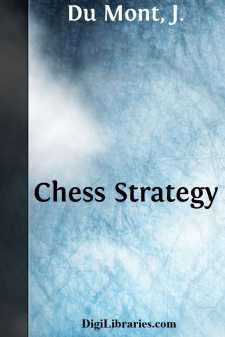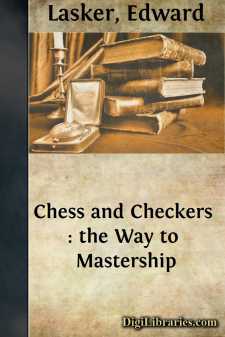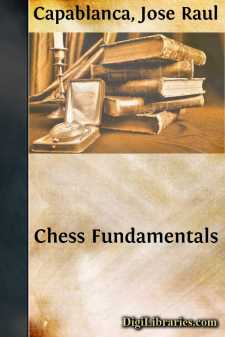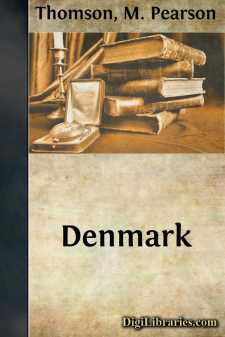Categories
- Antiques & Collectibles 13
- Architecture 36
- Art 48
- Bibles 22
- Biography & Autobiography 813
- Body, Mind & Spirit 142
- Business & Economics 28
- Children's Books 13
- Children's Fiction 10
- Computers 4
- Cooking 94
- Crafts & Hobbies 4
- Drama 346
- Education 46
- Family & Relationships 57
- Fiction 11828
- Games 19
- Gardening 17
- Health & Fitness 34
- History 1377
- House & Home 1
- Humor 147
- Juvenile Fiction 1873
- Juvenile Nonfiction 202
- Language Arts & Disciplines 88
- Law 16
- Literary Collections 686
- Literary Criticism 179
- Mathematics 13
- Medical 41
- Music 40
- Nature 179
- Non-Classifiable 1768
- Performing Arts 7
- Periodicals 1453
- Philosophy 64
- Photography 2
- Poetry 896
- Political Science 203
- Psychology 42
- Reference 154
- Religion 513
- Science 126
- Self-Help 84
- Social Science 81
- Sports & Recreation 34
- Study Aids 3
- Technology & Engineering 59
- Transportation 23
- Travel 463
- True Crime 29
Chess Strategy
by: J. Du Mont
Description:
Excerpt
I. RULES OF THE GAME
A GAME of chess is played by two opponents on a square board consisting of sixty-four White and Black squares arranged alternately. The forces on each side comprise sixteen units, namely a King, a Queen, two Rooks, two Bishops, two Knights, and eight Pawns. All units move according to different laws, and the difference in their mobility is the criterion of their relative value and of the fighting power they contribute towards achieving the ultimate aim, namely, the capture of the opposing King. Before I can explain what is meant by the capture of the King, I must set out the rules of the game in full.
Diagram 1 shows the position the forces take up for the contest. The board is so placed that there is a white square at the top left-hand corner. The Rooks take up their positions at the corner squares, and next to them the Knights. Next to those again are the Bishops, and in the centre the King and Queen, the White Queen on a White square, and the Black Queen on a Black square. The eight pawns occupy the ranks immediately in front of the pieces. From this initial position, White begins the game in which the players must move alternately.
The pieces move in the following way: The Rook can move from any square it happens to be on, to any other square which it can reach in a straight line, either perpendicularly or horizontally, unless there is another piece of the same colour in the way, in which case it can only move as far as the square immediately in front of that piece. If it is an opposing piece which blocks the way, he can move on to the square that piece occupies, thereby capturing it. The piece thus captured is removed from the board. The Bishop can operate along either of the diagonals of which the square on which he is standing forms part. A Bishop on a White square can there fore never get on to a Black one.
———————————————————-
8 | #R | #Kt| #B | #Q | #K | #B | #Kt| #R |
|———————————————————-|
7 | #P | #P | #P | #P | #P | #P | #P | #P |
|———————————————————-|
6 | | | | | | | | |
|———————————————————-|
5 | | | | | | | | |
|———————————————————-|
4 | | | | | | | | |
|———————————————————-|
3 | | | | | | | | |
|———————————————————-|
2 | ^P | ^P | ^P | ^P | ^P | ^P | ^P | ^P |
|———————————————————-|
1 | ^R | ^Kt| ^B | ^Q | ^K | ^B | ^Kt| ^R |
———————————————————-
a b c d e f g h
DIAG. 1.
The Queen commands both the straight and the oblique lines which start from the square she stands on, and therefore unites the power of both Rook and Bishop in her movements....












